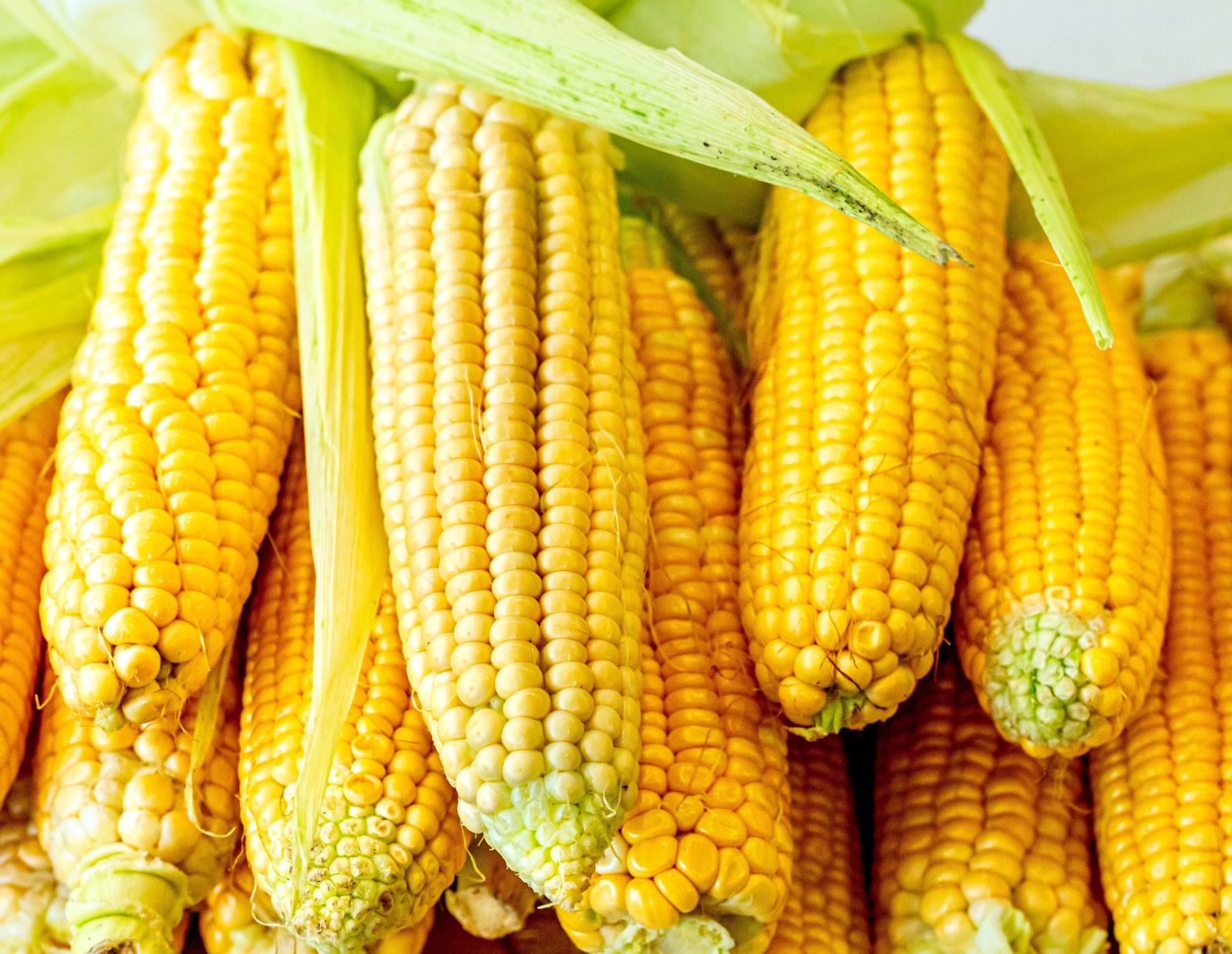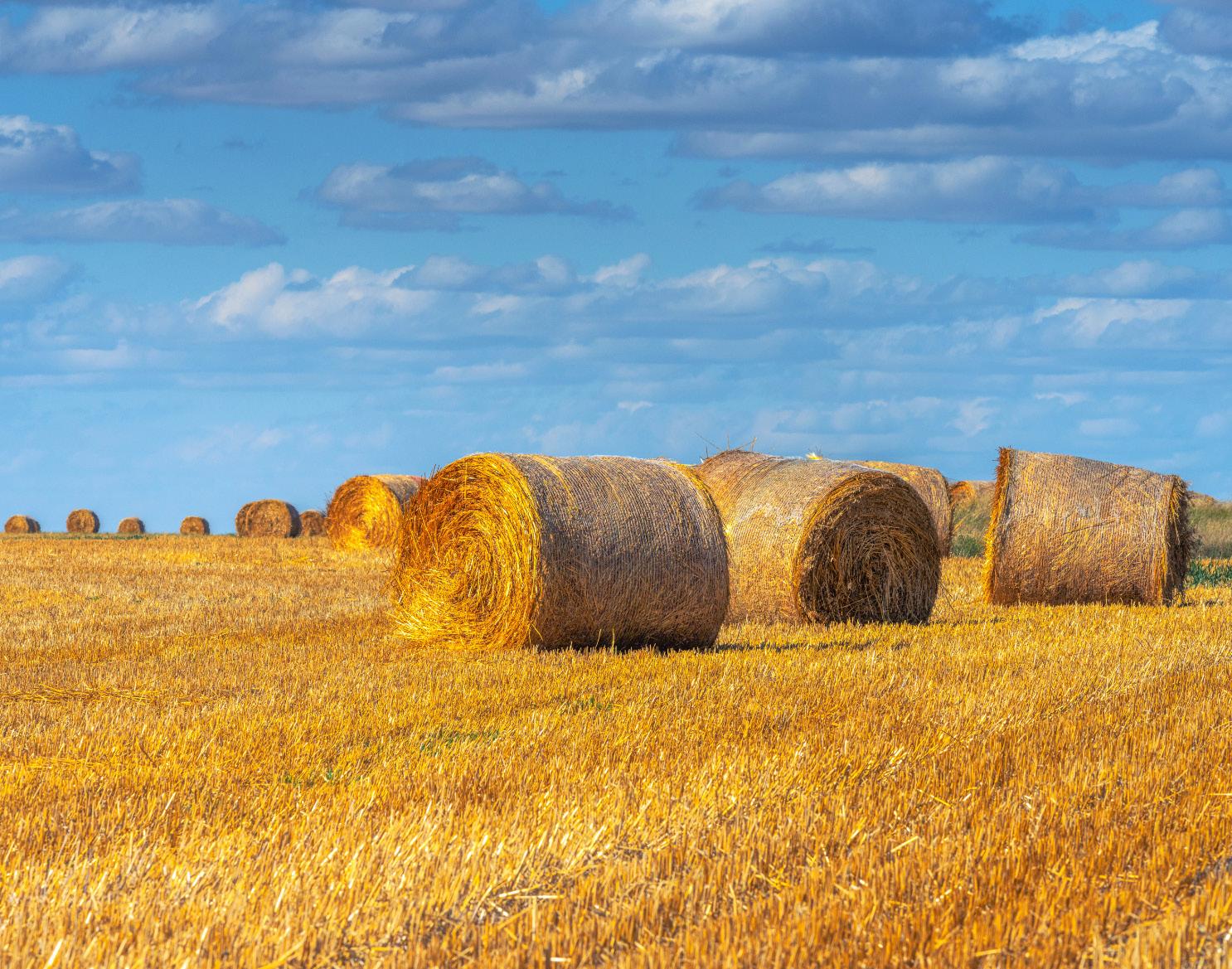
6 minute read
Nutrition: How sweet it is
NUTRITION
How sweet it is
Glucose, fructose, sucrose … confused? DAVID NASH, Director of Nutrition Technology at KER, digs deep into the subject.
While horses evolved as free ranging herbivores, the environment of today’s domestic horse has changed and their ability to roam and forage is often diminished. With the increased nutrient density of improved pastures and supplemented feeds, horse owners should be aware of carbohydrates and understand their benefits and negatives for certain horses. About 75% of all plant matter is comprised of carbohydrates, an extremely important part of a horse’s diet. There are different types of carbohydrates in horse feed, and how well horses digest and utilise them varies considerably. In nutritional terms, carbohydrates can be divided into two broad categories: non-structural carbohydrates (NSC) and structural carbohydrates. NSC: Occur either as simple sugars in the feed, or are broken down by enzymes produced by the horse. Included are glucose, fructose, sucrose, lactose and starch. They range from being low in a grass hay diet to comprising a high percentage in a highgrain, low-fibre ration.
Structural carbohydrates: Occur in the plant’s cell wall, are resistant to the horse’s digestive enzymes, and must be fermented by bacteria living in the gut before they can be utilised. Known as plant fibres, they consist primarily of cellulose and hemicellulose.
Carbohydrates got their name because they contain carbon combined with hydrogen and oxygen, usually in the same ratio as water. The basic unit of a carbohydrate is a monosaccharide (simple sugars, primarily glucose and fructose), with either five carbons (pentoses) or six carbons (hexoses). Hexoses are the most important carbohydrates for horses. They appear naturally as single sugars

(monosaccharides) and are fairly rare, while glucose and fructose occur freely in nature.
Glucose: Appears in small amounts as a single sugar (dextrose), and is of special interest in horse nutrition because it is produced from the digestion of many of the more complex carbohydrates, and circulates in the blood in that form.
Sucrose: The sugar obtained from sugar cane or sugar beets, sucrose is a twosugar molecule (disaccharide). Upon hydrolysis, the sugar splits into mixtures of glucose and fructose (invert sugars). Cane molasses also contains sucrose, glucose, and fructose. After sugar cane juice is boiled down and the sugar has been crystallised, what’s left is cane molasses, which contains about 55% invert sugar.
Fructose: Sweeter than sucrose, fructose occurs freely along with glucose in fruits and honey and in combined forms in higher carbohydrates. down by the enzyme lactase. It is less likely than glucose or sucrose to undergo acid fermentation in the stomach, a process that may result in tissue irritation. It promotes the development of acidophilic organisms in the intestine, opposes the growth of undesirable putrefactive bacteria in foals, and favours calcium and phosphorus assimilation, making it the sugar of choice for the suckling foal.
Polysaccharides: Are complex carbohydrates (strings of simple sugars of varying lengths), which are usually insoluble in water. Upon hydrolysis by enzymes and acids, they are broken down into various products and finally to their constituent monosaccharides. The most important form of polysaccharide for horses is starch.
Starches: Long strings of glucose molecules in both straight chains (amylose) and branched chain structures (amylopectin). be absorbed from the intestine, more complex carbohydrates must be broken down into simple sugars before they can be utilised by the horse. Starches are broken down by the enzyme amylase, but since the horse’s ability to produce amylase is limited, a great deal of the starch in a horse’s diet may escape digestion in the small intestine. The starch source, processing, amount of intake, timing of forage feeding, and the differences between individual horses all affect starch digestibility.
Directly measuring the amount of sugar in the horse’s ration used to be difficult, quite expensive, and was therefore usually estimated. However, chemical assays are now widely available to measure the amounts of starch and other soluble carbohydrates in horse feeds and forages.
Assays commonly used to determine NSC content of feedstuffs include starch,
FACING PAGE: Sucrose is a two-sugar molecule obtained from sugar cane. ABOVE: Lactose, the sugar of choice for the suckling foal.

Corn contains one of the more digestible forms of starch, with oats ranking number one for digestibility. Feeds lower on the glycaemic index include lucerne hay and grass hay.

water soluble carbohydrates (WSC) and ethanol soluble carbohydrates (ESC). NSC is typically defined as starch + WSC, which includes most forms of soluble carbohydrates in the feed, such as simple sugars, starch and other nonstructural carbs such as fructans. In some situations, ESC may be substituted for WSC in the calculation of NSC to more closely estimate the contribution of feed components that are absorbed as simple sugars in the horse’s digestive tract.
There is a wide range in digestible energy (DE) and NSC among common horse feeds. Typically, the NSC content is lowest in straw and mature hays, and cereal grains have the highest concentration. Molasses is also high in NSC, containing a level between corn and barley, but its overall DE content is lower because it contains 25% water. Many issues can arise due to undigested starch from cereal grains and fructans from pasture, and these compounds are the most likely to contribute to lactic acidosis in the hindgut.
Carbohydrates can be digested and absorbed as monosaccharides in the small intestine, or they can be fermented in the large intestine to produce volatile fatty acids (VFA) or lactic acid. The rate of fermentation and types of end products produced are variable and can have significant effects on the health and wellbeing of the horse.
Starch is the predominant carbohydrate in cereal grains. Although all starch is made up of glucose chains, the starch molecule is constructed differently in different types of grain, which has a significant impact on how well the starch is digested in the horse’s small intestine. Of the grains most commonly fed to horses, oats contain the most digestible form of starch, followed by sorghum, corn, and barley. Processing of grains can have a huge effect of pre-cecal starch digestibility and glycaemic index, which is particularly true for barley, sorghum and corn (the cecum is a large fermentation pouch which forms part of the digestive system).
Rapid fermentation can produce lactic acid, which may lead to a cascade of events culminating in laminitis. Slowly fermenting carbohydrates from the plant cell wall are absolutely essential to maintain a healthy microbial environment in the hindgut, and provide a major source of digestible energy for many horses. measure. The glycaemic index of a feed indicates the rate of carbohydrate absorption after the horse ingests that feed. For example, oats are 100 on the index, sweet feed rates at 129, and steam-flaked corn at 144, indicating that more glucose is derived from their prececal digestion than from oats. Feeds lower on the glycaemic index include cracked corn (90), rice bran (47), lucerne hay (46), and grass hay (23).
Carbohydrates and sugars can be an excellent source of calories to fuel a high-performance horse. However, for horses not requiring that quantity of fuel, an excessive caloric intake can lead to obesity and other clinical signs in those horses with equine metabolic syndrome, or PPID (equine Cushing’s disease). Obesity is a growing problem in the horse population and an important risk factor for laminitis through its association with insulin resistance. Owners should monitor body condition and seek professional advice to assess the carbohydrate levels in their horse’s diet.
Take the guess work out of formulating a healthy diet for your horse with the Kentucky Equine Research free diet analysis.










